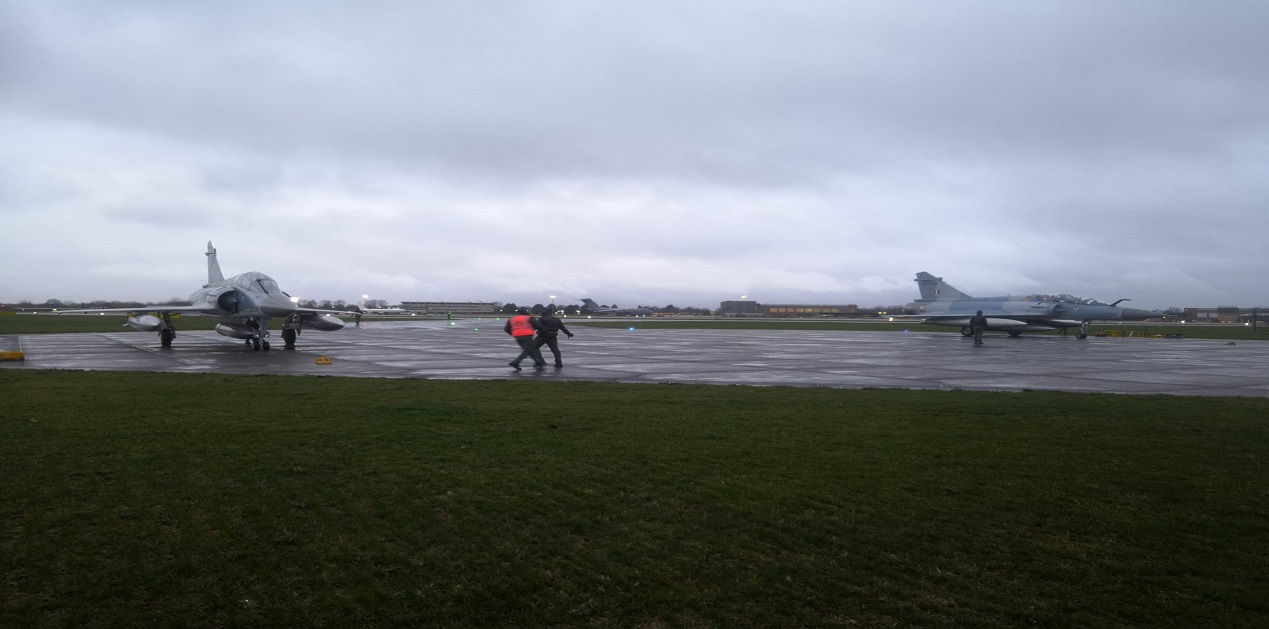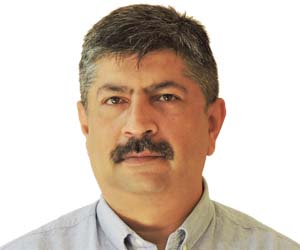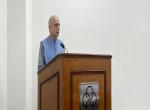The new Indian Air Force doctrine made available in the public domain has gone through various iterations and does incorporate aerospace aspects of the ongoing Russia-Ukraine conflict also. There has been emphasis on capturing the growing role of aerospace power and articulating it in national security and geo-political terms. The doctrine provides for a greater Indian interpretation than the previous editions. It entwines itself with the national security priorities enunciated by the government in a more coherent and cogent manner in the document. The document provides a more indigenous appreciation of the experience and its application to the future while assimilating and incorporating current and emerging technologies and capabilities in the aerospace domain in synchronization with outlook of the Government.
The document itself is a more concise document (94 pages) compared to the previous doctrine (158 pages). The previous doctrine (2012 edition) was more explanatory while the present one provides a sense of action. The document provides clear areas of emphasis commencing from the vision of “To be an agile and adaptable air force that provides decisive aerospace power in furtherance of our national interests” which encapsulates the goal of the air force.
The doctrine provides an insight into the approach of the IAF to certain key areas and thus the article tries to capture a few aspects of the work done and planned to fructify such a vision as well as read in between the lines as to what policy makers also need to keep in mind.
The doctrine lays emphasis on the use of Space, in this domain the prioritization by the IAF is on communication, surveillance, navigation and positioning. IAF on this front has proposed and the Defence Acquisition Council (DAC) in its meeting of 23 November 2021 accorded Acceptance of Necessity (AoN) for one Capital Acquisition proposal for GSAT-7C Satellite and Ground Hubs for real-time connectivity of Software Defined Radios (SDRs). The project envisages complete design, development and launching of satellite in India. Induction of GSAT-7C Satellite and Ground Hubs for Software Defined Radios (SDRs) will enhance the ability of our Armed Forces to communicate beyond Line of Sight (LoS) among one another in all circumstances in a secure mode. This is in addition to the GSAT-7A satellite which is operated by the Indian Air Force (IAF) and provides communications in Ku-band spectrum across the country launched in December 2018.
The defence space challenge (75 of them) instituted by the DIO (Defence Innovation Organisation), the IAF has given 29 problem statements for products it seeks products for. In addition to these requirements the Defence Space Agency (DSA) has articulated 28 problem statements which also have applications for the IAF. Some of the areas in which solutions and products have been listed are for effective foliage penetration, designing and developing a modular type small satellite, which should be able to integrate these miniaturised payloads; high throughput communication satellite in Low Earth Orbit (LEO) with user terminals, development of Network Management Port (NMP) for efficient SATCOM bandwidth management using multiple satellites, On Orbit Maintenance and Refuelling (OOMR) technology in LEO, development of a computer defence system for cyber situational awareness to secure own satellites from cyber-attacks, Advanced Extremely High Frequency (AEHF) geo satellite for secure communicationsand many more such projects in the space domain.[1]
Another point articulated in the doctrine has been “To expand and strengthen constructive engagement with other nations to promote regional and international security, peace and stability”. The IAF engagements have increased in diversity and quality both in the region of capacity building as well as in enhancing effectiveness. In 2019 the IAF conducted three exercises with foreign air forces, Ex Garuda with Su-30MKI in France, Ex Eastern Bridge with Mig-29 in Oman and withthe Singapore Air Force in Kalaikunda with Su-30MKI. In 2021 the IAF fighters exercised in Ex Blue Flag in Israel and Ex with Egyptian Air Force with IL-78 aircrafts and Mirage 2000 aircrafts. In 2022 the IAF fighters exercised with Oman, Malaysia, Australia, UK and France (three outside and two inside the country). Since the beginning of 2023 the IAF has already conducted three exercises with Japan, UAE and UK. Proposals for twelve (bilateral and multilateral) exercises outside the country and 12 inside the country are pending with the government. These exercises involve fighter aircrafts and provide operational exposure to the personnel. Hence, a credible active participation in international exercises are constant actions towards demonstration of capability, intent as well as resolve of the IAF towards deterrence. The IAF has been averaging a total 3-4 such interactions per year and these need to increase dramatically.
Another area of emphasis has been power projections in air diplomacy in which, the evacuation of Indian Citizens from Afghanistan during withdrawal of NATO forces, and East European nations during the Russia-Ukraine conflict. Evacuating citizens from Wuhan China and Iran as well gathering lifesaving equipment from various countries during the pandemic was undertaken. This involved over 1,500 sorties, 3,000 hours and 2 million kilometres, the distance covered is akin to going around the Earth 55 times.[2] More recently Operation Dost was launched for providing aid to Turkey; these are examples of furtherance of foreign policies in projecting Indian interests across the world. The IAF has been a first responder in all of these cases.
The transport fleet and hence the strategic lift capacity of the IAF has undergone a change and is slated for further improvements in the coming decade. The induction of the C-17and C-130 in addition to the IL-76 and An-32 already in the fleet provides tremendous flexibility. This was amply demonstrated during the mobilization during the Galwan crisis. The air force has 124 An-32 aircrafts, fourteen IL-76 aircraft, 11x C-17 and 12 x C-130 aircraft, 15 Boeing Chinook heavy-lift helicopters, 240 Mi-17 series medium-lift helicopters and nearly 100 ALH variants. Most of these were and are used for mobility and sustenance of the ground and air forces in forward areas. With the future induction and production of the C-295 transport aircraft in future it would add greater capacity and flexibility.
In terms of the IAF fighter strength the service is facing a challenge in terms of numbers, as on date it is down to 31 Squadrons but its embrace of LCA MK-1 and MK1A has provided it some solace. In future with the development and production of the Tejas MK-II and AMCA should shore up its numbers but the interim would need to be bolstered with Multi Role Fighter Aircrafts (MRFA). The present induction of 40 Tejas MK1 aircraft is likely to be completed bymid-2023, while 83 Tejas MK 1A order has been signed and delivery should commence by Feb 2024 and projected to be completed by Feb 2029. 108 Tejas Mark-2 jets with first flight in 2025 and first aircraft ready for induction in 2028. For the Advanced Medium Combat Aircraft (AMCA) with its first flight projected in 2030 and induction projected to commence in 2033 with a likely order of 126 jets.
The take away from the IAF doctrine is the manner to bridge the fighter gap in the interim, which obviously is not stated within it. The reducing numbers in the light of the Pakistan Air Force having increased its Squadron strength from 16 in the 1960's’ to 24 Squadrons now. While the Chinese have The People’s Liberation Army Air Force (PLAAF) and PLAN Aviation together constituting the largest aviation forces in the region and the third largest in the world, with over 2,800 total aircraft (not including trainer variants or UASs) of which approximately 2,250 are combat aircraft (including fighters, strategic bombers, tactical bombers, multi-mission tactical, and attack aircraft). The debate in India is still on 42 Squadrons which was calculated in late 1960’s of which it has 31 squadrons only and reducing. The debate in India is raging on Theatre Commands which inherently means resources allotted ab-initio to meet the needs of the Commander, but with such meagre numbers the IAF would be hard pressed in a one front scenario and on a two front scenario it would be challenged further. Thus the doctrine does state the need for centralization of resources which provides flexibility in apportioning the resources depending in the developing operational air situation.
Another area which needs consideration is the need for enabling and sustaining operation assets. The IAF at present has a large chunk of its transport fleet dedicated for air maintenance of the ground forces in the forward areas along the borders. Continued emphasis and timely procurements will need to be maintained. In terms of surveillance and Air-to-Air refuelling there is a need for greater induction of assets especially in a two front 24/7 scenario.
Conclusion
The aim of the IAF doctrine states “is to serve as a reference or guidance for familiarisation, to policy makers, military practitioners, bureaucrats, strategic community, academia, the fourth estate and citizens of the country”. Equally important is what the doctrine does not state but needs to be considered. The IAF has distilled its wisdom from the past and continues to apply it for the future. But there is a need for the other stake holders in the defence security architecture to provide it with the resources it needs to fulfill is security objectives.
Endnotes :
[1]https://idex.gov.in/sites/default/files/2022-11/Defence%20Space%20Challenges%20description%20%281%29.pdf
[2]https://www.sps-aviation.com/story/?id=3185&h=The-Versatile-Transport-Fleet-of-the-IAF
(The paper is the author’s individual scholastic articulation. The author certifies that the article/paper is original in content, unpublished and it has not been submitted for publication/web upload elsewhere, and that the facts and figures quoted are duly referenced, as needed, and are believed to be correct). (The paper does not necessarily represent the organisational stance... More >>
Image Source: https://scontent.fdel45-1.fna.fbcdn.net/v/t39.30808-6/334140476_224308613330569_3461282093964125642_n.jpg?_nc_cat=109&ccb=1-7&_nc_sid=8bfeb9&_nc_ohc=1VuwH0NixaQAX-Ydz68&_nc_ht=scontent.fdel45-1.fna&oh=00_AfBbaKT2xPtq7a9u4SNpPhP7Kn3hxs_mMrgHfDIZM7Sg_Q&oe=64103B3A











Post new comment